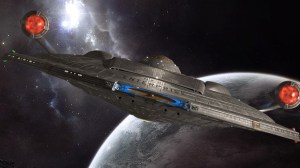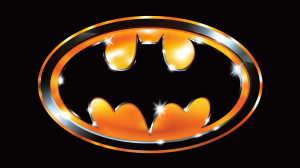Mistwalker Corporation is set to release an all-new role-playing game soon called Fantasian. While that might seem like a fairly standard thing for the developer of video games like The Last Story to do, Fantasian is something of a unique title among all its peers. First and foremost, the backgrounds are made with actual physical dioramas of which over 150 were made, and it is also set to release on Apple Arcade, Apple’s gaming subscription service. ComicBook.com had the opportunity to speak with Mistwalker founder and Final Fantasy series creator Hironobu Sakaguchi via translator all about the upcoming video game and its unique nature.
Videos by ComicBook.com
Notably, beyond the dioramas, Fantasian also includes something called the “Dimengeon Battle” mechanic where, instead of random encounters, players can instead send enemies to a separate and distinct dungeon in order to explore the world uninterrupted. When they decided to take them on, the field will be littered with the random encounters they previously avoided, allowing players to find one large battle rather than several smaller ones.
Coming Soon to Apple Arcade: Fantasian.
Enter a beautifully crafted, handmade world and unravel the mystery of a bizarre mechanical infection slowly engulfing all that is known to mankind.
⏰ Click to get a reminder when it’s available: https://t.co/xFwsia7Vcm pic.twitter.com/wiJA9SQWcL
— Apple Arcade (@AppleArcade) March 2, 2021
And if you are familiar with the works of Sakaguchi, it should come as no surprise that legendary composer Nobuo Uematsu has created the soundtrack for the title. More specifically, Uematsu worked on all 60 tracks, which Sakaguchi says might be the last time that the composer does a full soundtrack like this.
Fantasian does not yet have a definitive release date beyond coming soon, but it will release for Apple Arcade and support all of the various devices that Apple Arcade can run on. You can check out our previous coverage of the upcoming mobile role-playing game right here.
What do you think of what we have seen of Fantasian so far? Are you excited to check it out when it releases? Let us know in the comments, or feel free to reach out and hit me up directly over on Twitter at @rollinbishop to talk about all things gaming! And keep reading to check out our full interview with Mistwalker’s Hironobu Sakaguchi.
On the Dioramas
ComicBook.com: I think the obvious question, why the dioramas? It’s a certainly striking and unique way of building those backgrounds for video game, but pretty physically intensive.
Hironobu Sakaguchi: The dioramas, of course, give this very… I think a big element is the visual impact. It’s a very unique kind of visual form of expression, the handcrafted touch that you really can’t get with any other medium. But in addition, this game being on Apple Arcade, I know that it’s going to be on a lot of tactile devices, iPhones, iPads. People are going to be playing it and controlling the characters with their fingers and their hands. I thought it was kind of almost poetic and synergistic, in a way, that these handcrafted dioramas that you would want to touch that were made by these artisans hands, although through a glass screen, the players are able to touch this, again, with their hands.
Finally, the story as well is a very important aspect to an RPG like this. Going back to my roots, I mentioned earlier with Final Fantasy or earlier Final Fantasies… Final Fantasy VI, for example… the story is a very kind of heartwarming and uplifting one. I thought that with that theme, it played together very nicely. You have a very unique kind of charming feel and atmosphere that you get from the dioramas, which works well with the theme of the game.
On Inspiration

Now, you mentioned Final Fantasy VI specifically as part of an inspiration for Fantasian. What sort of other games went into the inspiration for the game?
Of course, there are elements like the Dimengeon mechanic that I had mentioned during the presentation, the dioramas as a form of new visual expression that are unique to Fantasian. But I think if I had to kind of trace back other sources of inspiration, it would be the attention to detail that you would see in a lot of old pixel-art RPGs. For example, maybe you see a little alleyway. “Ooh, can I enter there? Oh yes, I can. I’m in an alley now.” And then at the end of that alley, there might be a treasure chest that rewards you for that exploration. This is something that you would see in very classic RPGs like Dragon Quest. There might be a treasure chest on the other side of the counter in a shop, but you can’t really access it until you kind of walk around to the side of the building or to the back of the building. You find a door, you access it and you take whatever’s inside. And then the shopkeeper gets mad at you.
Little details like that, that kind of compound and add to the effect and add value to the player’s experience,I feel is almost kind of a nostalgic RPG quality or element. This isn’t necessarily unique to Final Fantasy VI or any of the Final Fantasies. Dragon Quest does this really well. But that feeling that you get from the pixel-art era RPGs, taking that but recreating something using the more modern technology that we have available to us was kind of, I guess, what Fantasian set out to do.
On Developing for Mobile
Fantasian is far from the first mobile title from Mistwalker at this point. What learnings from the development of titles like Terra Battle, Terra Battle 2, and Terra Wars have you been able to apply in the development of this game?
On a very technical level, of course more familiarity with the mobile platform and what it’s capable of, all that bank of knowledge comes in handy when developing specifically for that platform. However, the game itself, Fantasian, is a lot closer to some of its console peers in terms of the architecture and the user experience. So I would say in making Fantasian, a lot of that console game experience came in more handy than the technical knowledge from working on mobile platforms.
On Apple Arcade

Apple Arcade offers a pretty unique mobile platform for these sorts of games. Are there plans to support the game post-launch with major updates?
As of right now, Fantasian is estimated playtime of about a 40- to 60-hour experience. After you complete all the quests and stages, you could watch the ending of the game. But it being a digitally distributed game, of course it is technically possible to continue to add content to it. But I can say as of this moment, at the moment of this interview, there aren’t any plans to add on to it or expand it.
Speaking of Apple Arcade, what was it like developing for this platform? What did you find the benefits of making an Apple Arcade release?
I guess one of the challenges with this experience was because of the wide range of devices that are available on Apple Arcade, just getting over the screen resolution and screen ratio challenge of the various devices. You take an iPad, it’s pretty close to a square ratio. Then you go to the Macs and other Apple TV devices and you have a 16:9 ratio. And then you go all the way to the iPhone, which is very, very horizontal. Making sure the UI placement and how the game is displayed, none of the information is getting lost for anyone in spite of whatever device they so choose, that I think was a big development challenge.
But more so I think in terms of the user experience and how they might play… Because with Apple Arcade, of course you can save your data on the iCloud so someone might be on the go playing on their mobile device and then maybe they’ll reach a very epic scene or a climactic scene and want to see on the big screen. That has a pretty seamless transition because of save file synchronizing. I think it opens up possibilities to a very interesting way to experience the game. Apple Arcade made that transition quite easy with the different libraries and dev environments that they provide.
On Nobuo Uematsu Doing the Soundtrack
When it came time to work on the soundtrack, you mentioned that you have an extensive history working together with Nobuo Uematsu. Was it ever a question that he would be the one to do it?
For me, there was really no doubt in my mind that Uematsu was going to compose everything for me. But during the development period, there was actually a time where he wasn’t too good. His health wasn’t that great and it came into question whether he’d be able to work on all 60 tracks, he scored the entire soundtrack for the video game. I had my concerns, of course, but Fantasian being the scope and size that it is, and having a lot of conversation with him, me showing him what I wanted to achieve, I think he realized, “Oh, wow. Sakaguchi’s going all out with this game, so I’m going to pour my heart and soul into this game as well.”
Dare I say I think this will most likely be the last game for which he scores the entire soundtrack from end-to-end. Of course, he’s going to continue composing music maybe on a track-by-track basis, but from every single track, all 60, I think it might be his last. So it was a very kind of poignant moment for me as well.
On the Dimengeon Battle Mechanic

What was the genesis of the Dimengeon Battle mechanic? Is it just general exhaustion with the sort of iconic random battles, or is it something else
The genesis of this mechanic actually came from the dioramas. When we were test playing some early builds of the game, one of the ways people can move their characters throughout the world is by placing pins on the map and then their character would then move toward that pin’s location. When you do this across a larger map that happens to be on the screen or you’re going to a treasure chest that’s many levels below you, your character’s going to spend a little time walking to that. We realized how fun it was to kind of watch this transition and to have that experience be interrupted by random encounters, it was a little jarring. So it came from this idea of the joy of exploring different dioramas.
On Comparisons to Square Enix
Given you are who you are and the Mistwalker team is who they are, there will be inevitable comparisons to the current state of, say, the Final Fantasy franchise when Fantasian releases. What do you make of those conversations where people compare Mistwalker games to Square Enix titles?
I believe Fantasian takes a different approach or a different direction in terms of RPGs. It’s a much more nostalgic experience, as I mentioned earlier, and kind of paying a lot of attention to the finer details of that experience. Crafting how the user engages with the world is what Fantasian is about. On the other hand, the Final Fantasy VII Remake, for example, is a completely different approach. I congratulated [Yoshinori Kitase], who made the game, on how cutting edge the visuals and graphics are. It’s a different experience. I think they kind of co-exist in different spaces, is my answer to that.








